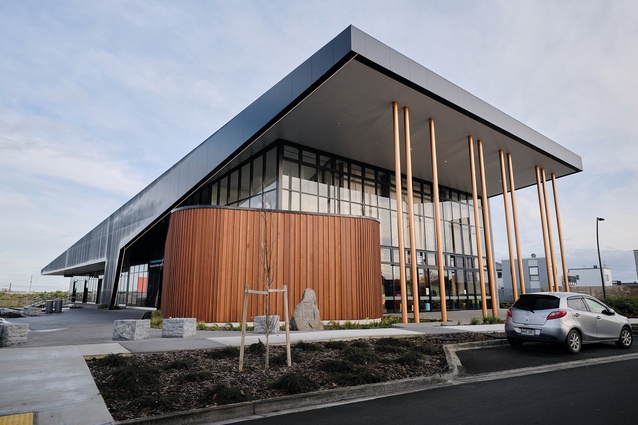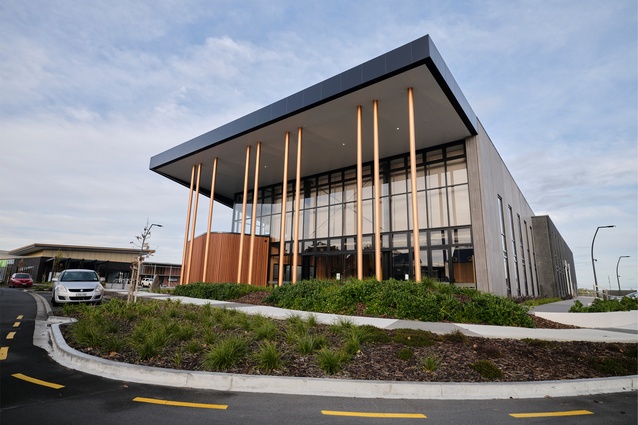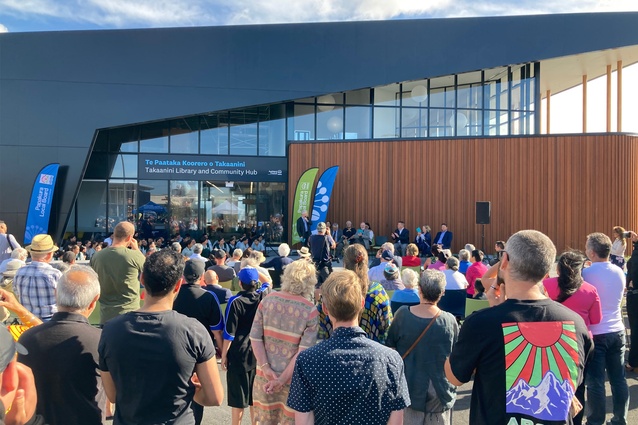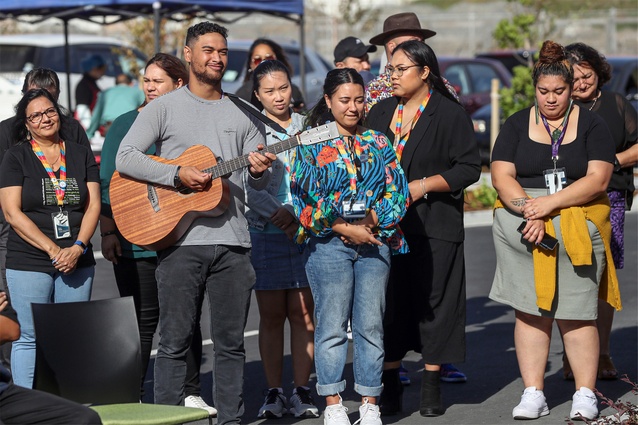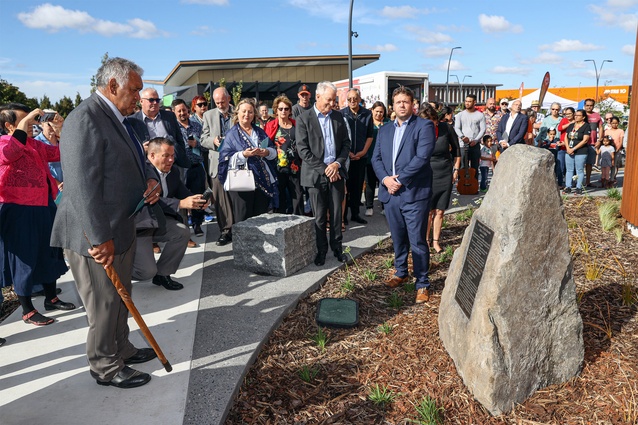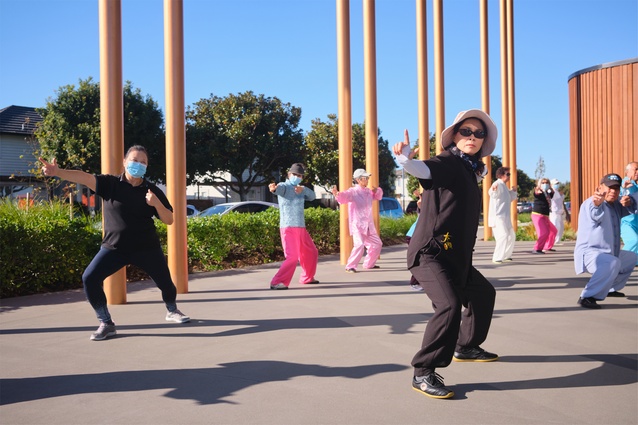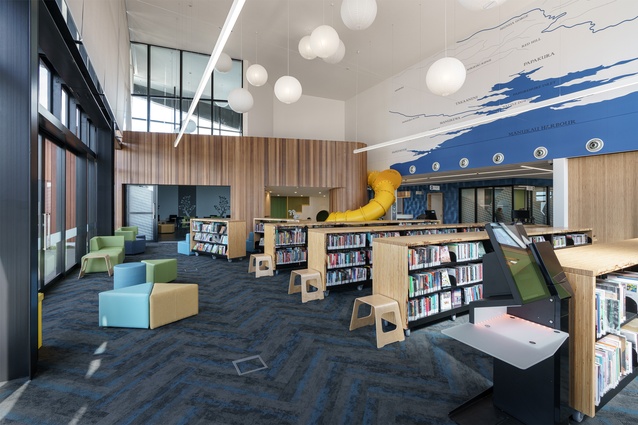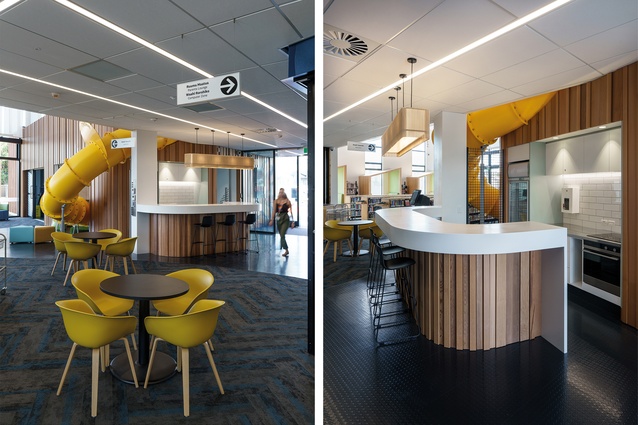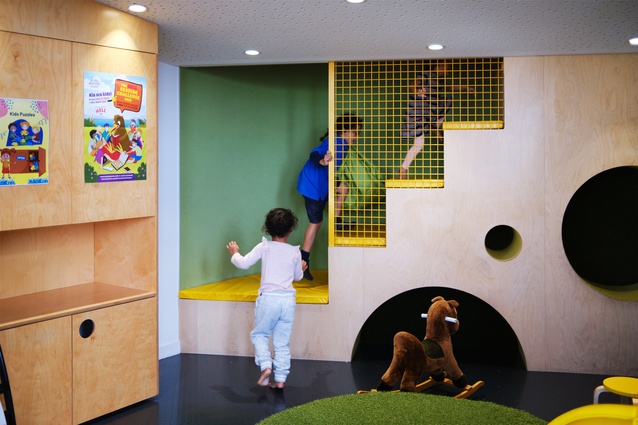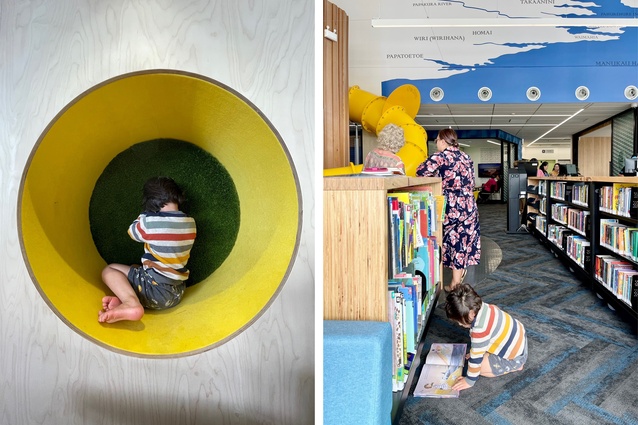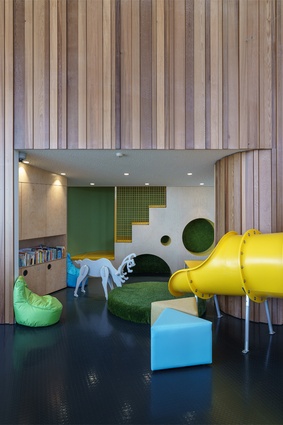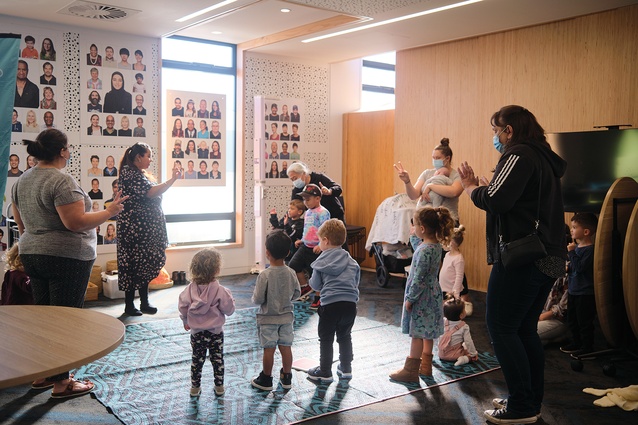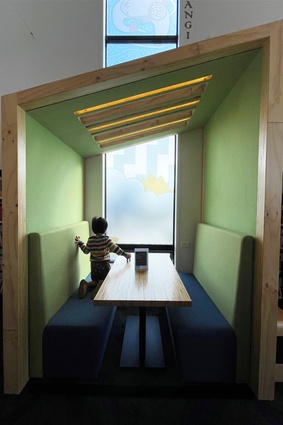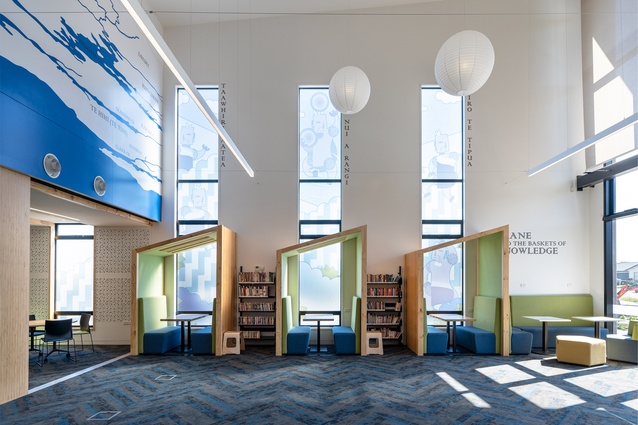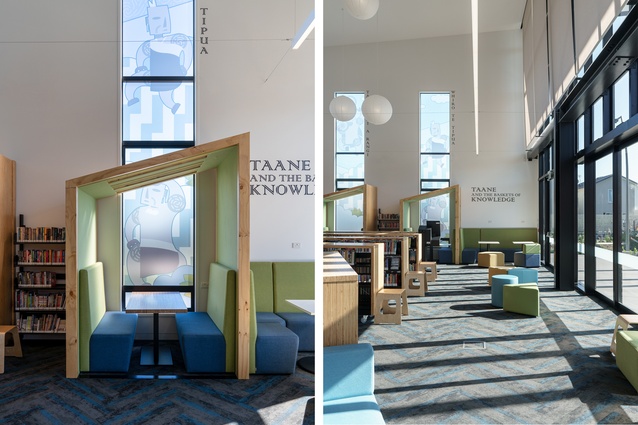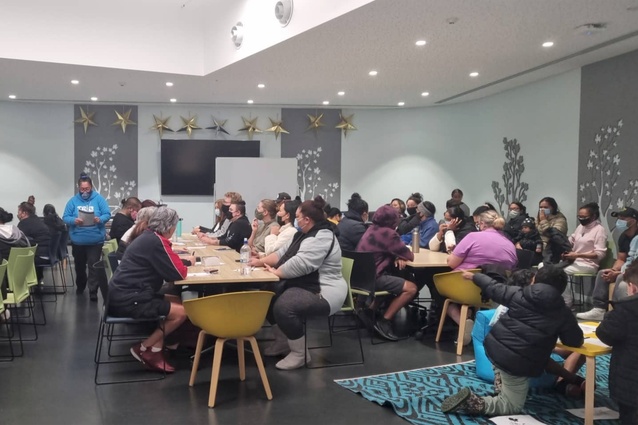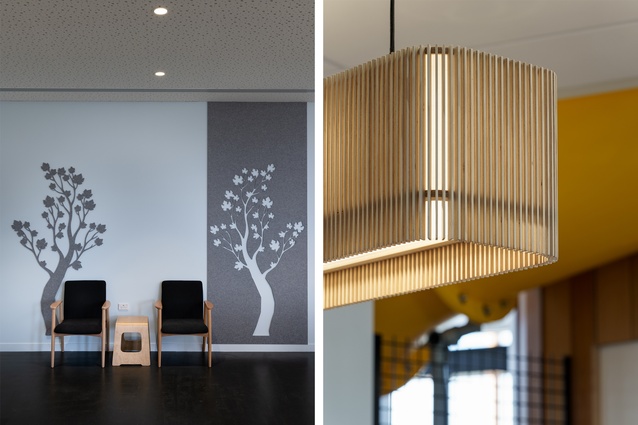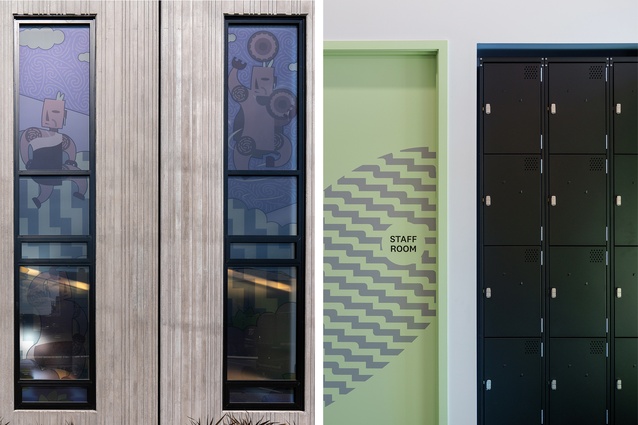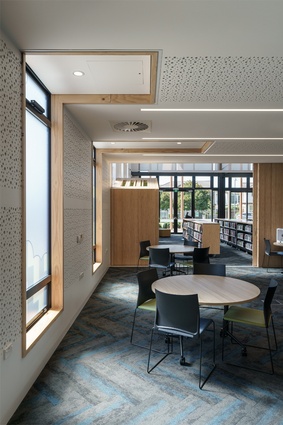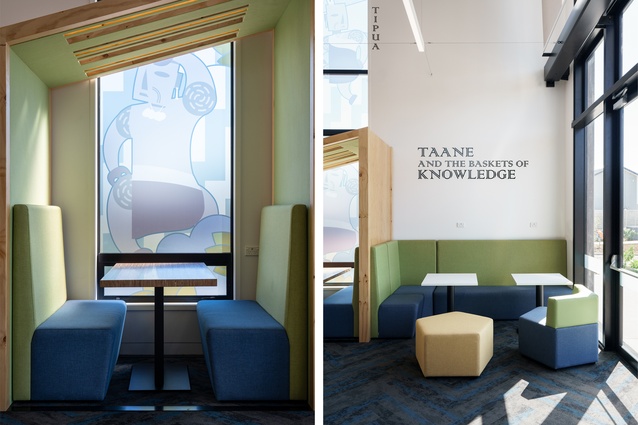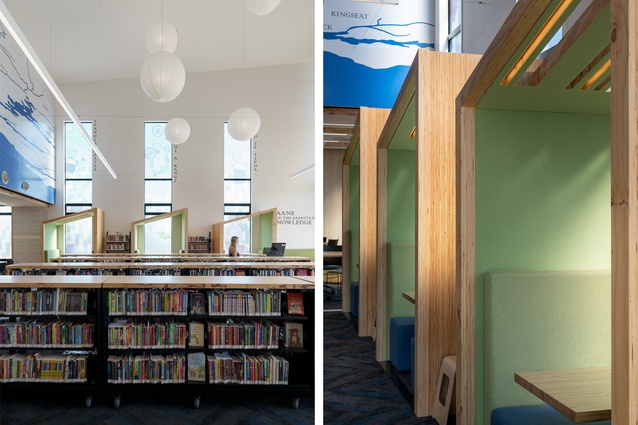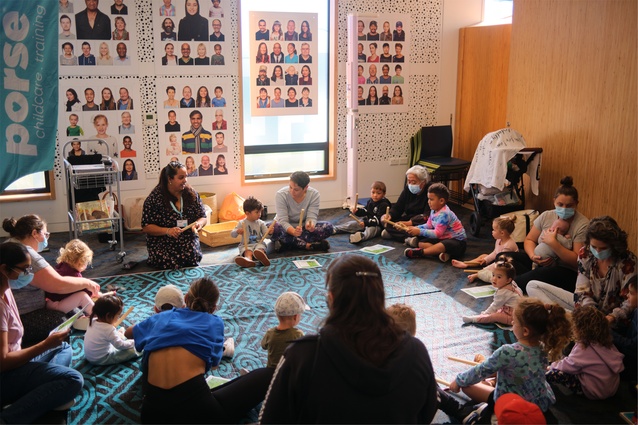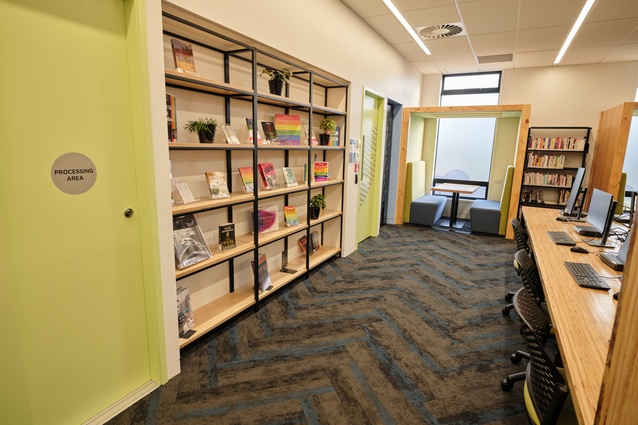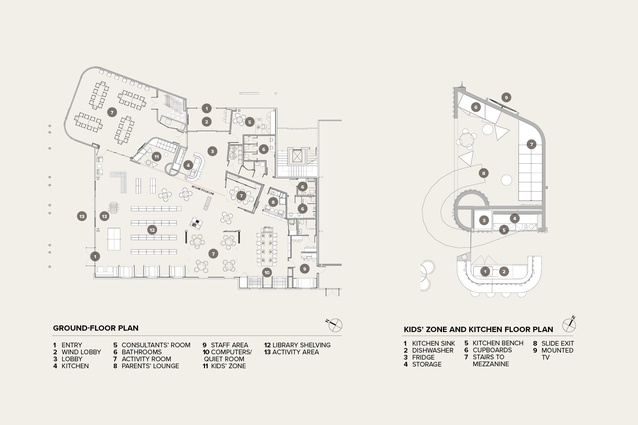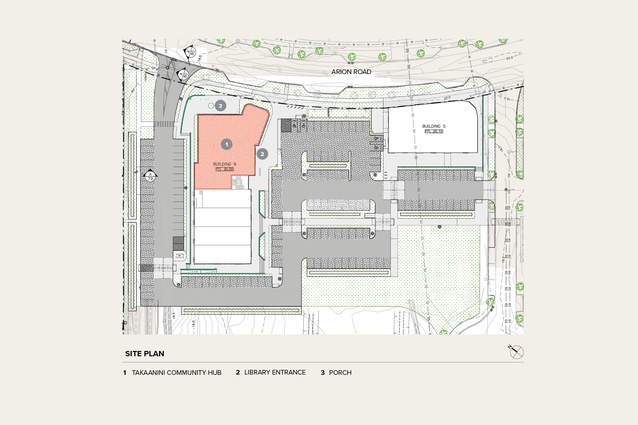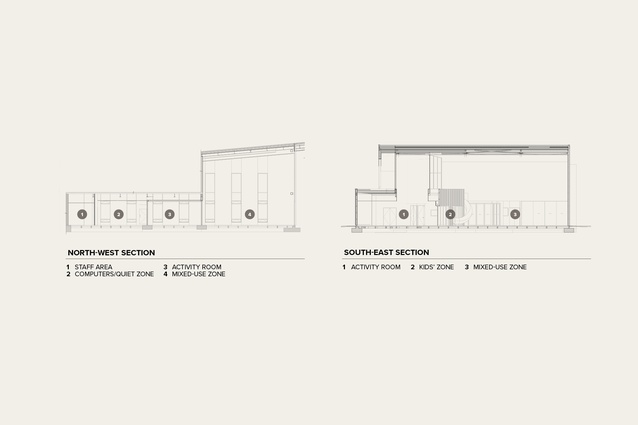Cultivating community
Jon Rennie visits Te Paataka Koorero o Takaanini, the Takaanini Community Hub, and finds Pacific Environments has eschewed conventional typologies within this Ignite base build and created a hub for the whole community.
Good libraries come from a combination of their collections, their services and their architecture. While some may favour one or two components, generally this can never compensate for an absence of the third. Over time, and through each new build, reconsideration of these components has pushed the others forward, challenging typology, content and the plan. In Takaanini, an extensive fit-out by Pacific Environments is the latest iteration that has provided a new ‘library’ that admirably houses Auckland Council’s latest service model.
Despite relatively low budgets, libraries in Aotearoa New Zealand have often been at the forefront of trying new things — librarians pushing architects and architects leading librarians – working to set new standards and serve their communities. Wellington Central Library Te Matapihi (1987) introduced a café and complementary businesses, and Palmerston North Central Library (1994) went further and borrowed from Scandinavian precedents and retail models to create a ‘Living Room’ for the community. Christchurch’s South Library (2003) pushed passive sustainability and Upper Riccarton (2006) shares facilities with the neighbouring school. In 2012, Te Takeretanga o Kura-hau-pō in Levin combined a cinema, café, youth centre and bank in a vacant supermarket, while Ōtāhuhu Library directly connects with a swimming pool to create a place where you can read and/or swim.
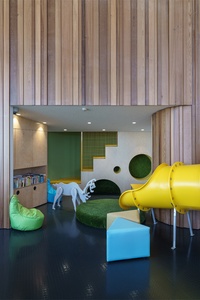
If you want to convince elected officials about the opportunity of a new build, then Tūranga in Christchurch is the current poster child for the shiny new thing but speak to an Auckland librarian and the new community hub in Takaanini is where they are looking.
Pacific Environments worked with Auckland Council and the Papakura Local Board to develop a brief, test locations and find a space for the hub. They then worked with a developer and their master-plan architect (Ignite) to integrate the facility both into a wider development and within the constraints of an ‘existing’ building form. The result (to borrow from and paraphrase author Caitlin Moran) is a library for Takaanini that is in the middle of the community and a cross between an emergency exit, a life raft and a festival… the only sheltered public space where you are not a consumer but a citizen instead.
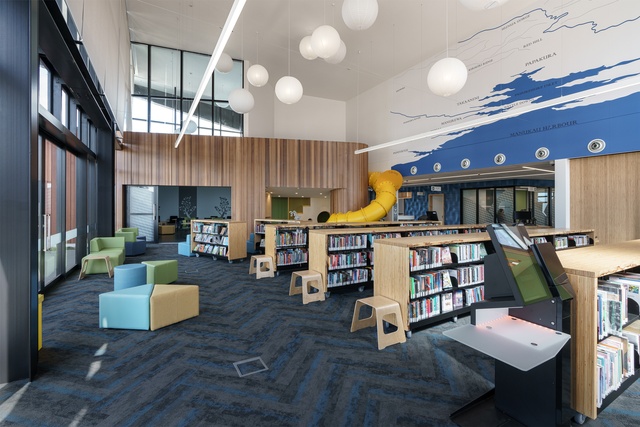
Takaanini lies south of Auckland, along Great South Road and the train tracks that run parallel to it. A virtual tour via Google Street View enables a 2009 cruise of the streets and the suburban sprawl gobbling up farmland. Even five years ago, the site was empty, surrounded by farmland that is now full of spec housing. Defining a heart or centre of this community is difficult, with competing commercial developments endeavouring to centre the town around themselves. A drive down Great South Road is a brief ‘CliffsNotes’ history lesson on the evolution of big-box linear strip developments kowtowing to various anchor tenants. Start at the large sign with car park out front (Bunnings, Countdown), continue then to the cul-de-sac car park (Briscoes, Mitre 10) and then turn the corner into ‘Takaanini Village’ where the big-box retail (The Warehouse) is slapped back, screened and mitigated by smaller businesses, footpaths and landscape. It is here that the Takaanini Community Hub is located.
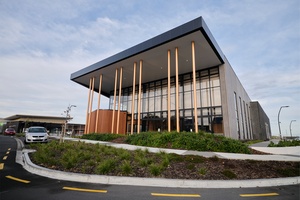
It is difficult to determine whether or not the location of the library was the best choice, or even where else was considered, but the site does have merit. It is close to the geographical centre of Takaanini, on the edge of new residential areas and linking to the latest commercial edge. In the absence of a true ‘town centre’, it appears a shrewd bet that this is good enough for the foreseeable future, while taking a lease hedges Council’s bets should fluctuations of the market or planning (a transport-oriented development over Takaanini Station perhaps?) shift the ‘heart’ elsewhere in future.
The Ignite master plan and retail architecture is clearly intending that the ‘Village’ is the best in the neighbourhood. The retail connects to the street at multiple points; the corners are strongly signalled and expressed. The material palette is of good quality and well detailed, service areas are well positioned, with ‘fronts and backs’ carefully considered, and there is a legibility (through common roof forms) of the architecture in the wider context. What is missing is any residential over and within it. Whether or not it has done enough to become the permanent centre of Takaanini, only time will tell but hosting the Community Hub certainly helps.
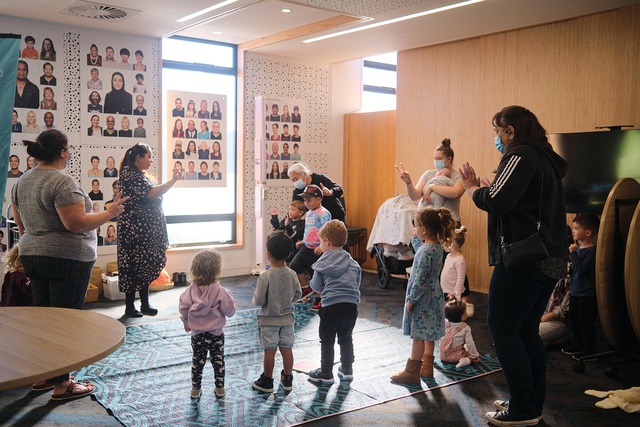
Not only does Council’s financial investment in Takaanini Village support the development’s longevity but the facility’s location at the northern corner of the site ‘anchors’ the master plan and provides connection to the adjacent residential areas. The master plan anticipated a programmatically unspecified building in this corner that apparently alludes to the site’s history of dragged kauri logs – reflected in the strong mono-pitch roof and opening to the east. Anecdotally, a gym was another option and, exploring the building, it’s hard to understand how that would have worked well as an anchor. While this approach to master-planning without programme is not without precedent, it is sobering to consider that a key piece of social infrastructure was so beholden to the whims of the market. Here, a good urban outcome has been (accidentally?) the product of architectural narrative, urban form-making, streetscape considerations and the ability of some pointy-shoe-wearing real estate agent looking to maximise yield… a reminder of Jeremy Till’s observation that ‘Architecture Depends’.
So, within this master plan and the envelope of Ignite’s ‘anchor’ building, Pacific Environments was tasked with designing spaces that could deliver the new service model. An expanded programme of library and community services where people (not the collection) come first, partners (Citizens Advice Bureau, Justices of the Peace, etc) share (rather than lease) the spaces, and the staff members who host reflect the community that they serve – so the people of that community literally see their faces in their places. Functionally, this means no RFID gates, multiple entrances and an adaptable plan that enables after-hours, unsupervised access to parts of the building. The fit-out is well put together, with the money spent in the right places and only small signs of where the base build stops and the fit-out begins (the stark GIB walls at upper levels do lend a slightly transitory – could have been a gym – feel to the interior).
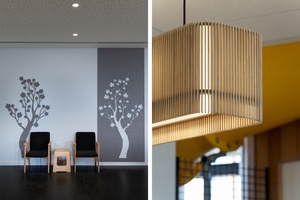
Quibbles about the architecture seem to stem from the constraints with which Pacific Environments were working. Access to partner rooms is constrained by the IT set-up and there is some irony in the fact that the Council building signage is so poor in a strip mall. Pacific Environments project architect Anthony Gibbs describes amicable discussions with both the leaser and the base-build architect that give the impression that the project is an adaptive reuse of a building rather than a greenfield new build. While this is common to fit-outs and some of the base-build constraints are admirable (no roof penetration for an architecture that is ‘all roof’), others are a little perverse.
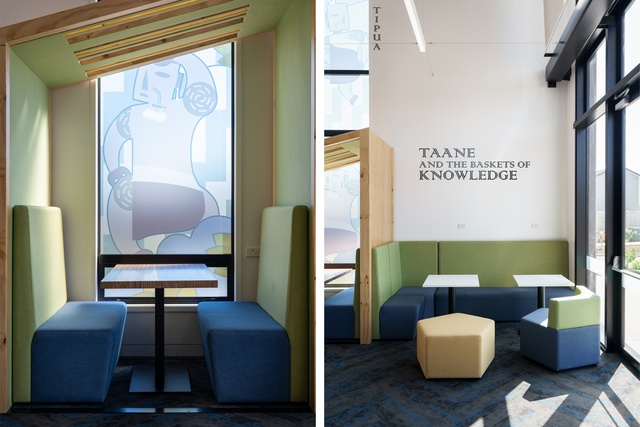
The Te Wao nui a Taane room is used for community events and is housed in Ignite’s externally expressed, cedar-clad form. It is a room that needs a window at ground level for a glimpse of the interior (for those arriving late and seeking reassurance) and some external sense of activity. But, despite the base-build design progressing at the same time as was the fit-out, the ‘Architectural Concept’ apparently said ‘No’.
The over-scaled verandah to the east sits (weirdly) outside the Council’s leased area and, in turn, the developer’s landscape is ‘parsley’ rather than an extension to the street of this facility. This space is unfurnished and, while the library does ‘camp’ in it, it feels empty and the ability for the hub’s activities to spill outside easily is complicated by the confused ownership of this space.
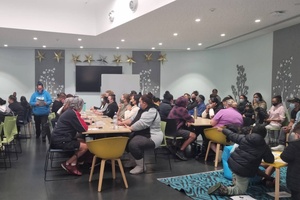
However, as you enter the building, it is immediately apparent that you are not in a ‘shhhhhh! space’: everyone is greeted and the atmosphere is alive with music playing loudly; te reo is visible and spoken; food and drink are being prepared at the island kitchen; and children are careering down the slide. It has perhaps the best ‘soundtrack’ in the Connected Communities network.
Pacific Environments has made great use of sliding panels/doors to provide flexibility. When all are open, one large space is formed but, when closed, three discrete meeting spaces are created and the remaining large space has a number of nooks and recesses that ensure the space is not one large barn. This planning has been very successful, with studying parents able to bring their children to be observed and entertained – foosball, ping-pong, slide and books – without unduly distracting the adults from their work.
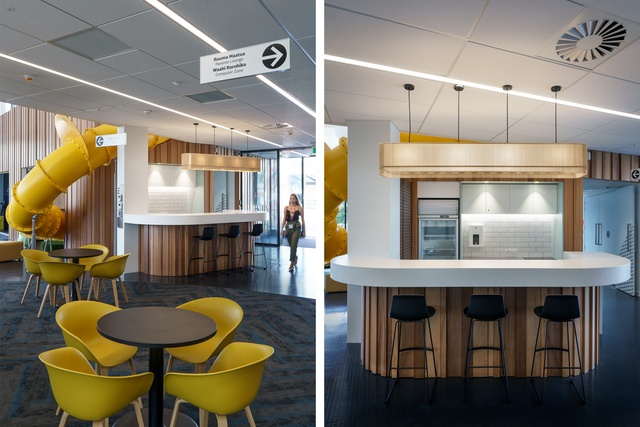
Throughout, the public spaces are maximised, staff areas are reduced and processing of the collection occurs ‘on the floor’. Staff members often have their breaks in the space and at the kitchen bench, which is at the heart of the plan. Here, anyone can make a cup of tea, have a coffee and share food donated to the hub. In this sheltered public space, no one is a consumer; rather, each person is a citizen instead.
Takaanini is another step on the journey of pushing ‘libraries’ forward. On the one hand, Takaanini is affronting, as it questions whether or not a library or a town requires a more permanent typology, suggesting that a fit-out is all that is required (a reminder that, often, architecture is a background art). On the other hand, it demonstrates an opportunity to experiment and iterate more often: to operate at the speed and longevity of a retail fit-out or installation – to try new things and work with librarians to take community facilities in new directions.

